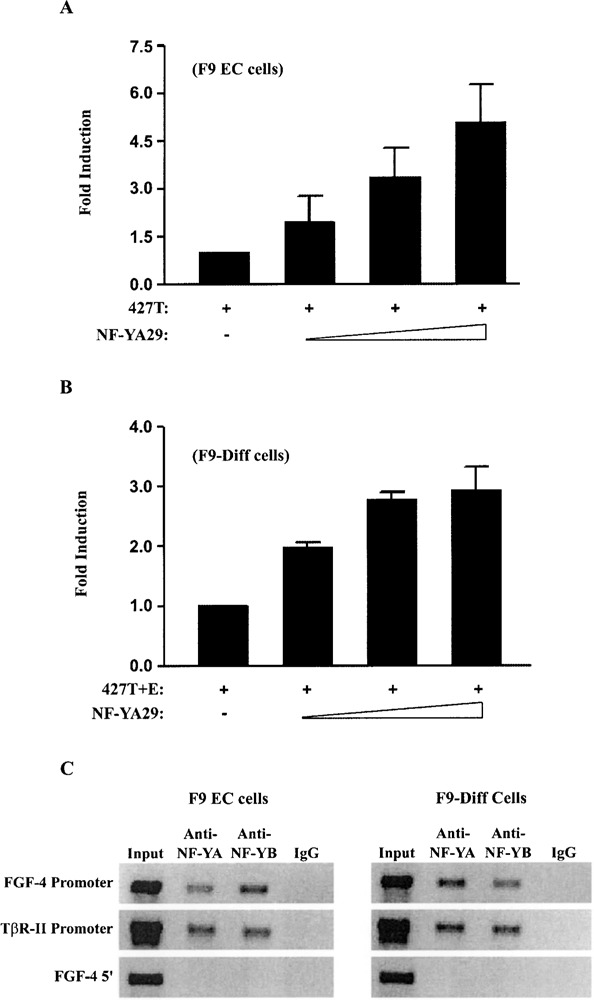Figure 5.

NF-Y is functionally involved in the repression of the FGF-4 promoter and binds to the endogenous FGF-4 promoter in F9 EC and F9-differentiated cells. (A) Transfection of F9 EC cells with 15 μg of 427T alone or with 0, 1, 2, or 4 μg of an expression plasmid for NF-YA29. Results are presented as fold induction over the activity of 427T alone, which was set to 1. This experiment was performed three times. The data shown are the compilation of the three experiments, and the standard deviation for each condition is represented by error bars. Analysis of the data by the Student’s t-test indicated that the activation observed by the transfection of 2 μg of NF-YA29 was significantly greater than the activity of 427T with a p-value of less than 0.05. (B) Transfection of F9-differentiated cells with 15 μg of 427T+E alone or with 0, 2, 4, or 6 μg of an expression plasmid for NF-YA29. Results are presented as fold induction over the activity of 427T+E alone, which was set to 1. This experiment was performed two times. The data shown are the compilation of the two experiments, and the standard deviation for each condition is represented by error bars. Analysis of the data by the Student’s t-test indicated that the activation observed by the transfection of 0.5 μg of NF-YA29 was significantly greater than the activity of 427T+E with a p-value of less than 0.05. (C) ChIP assays were performed on nontransfected F9 EC and F9-differentiated cells as described in Materials and Methods. NF-Y-associated DNA fragments were immunoprecipitated with an antibody to NF-YA and NF-YB. Preimmune normal rabbit IgG was used as a negative control. DNA fragments were amplified using primers for the FGF-4 promoter, the TβR-II promoter, or a region upstream of the FGF-4 promoter (FGF-4 5′). This experiment was performed three times with similar results.
